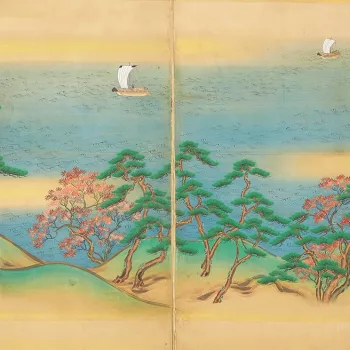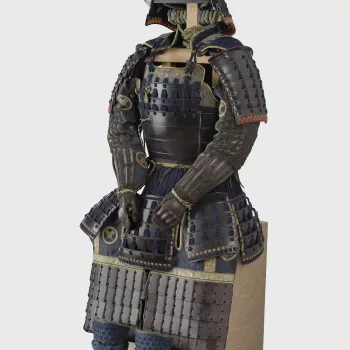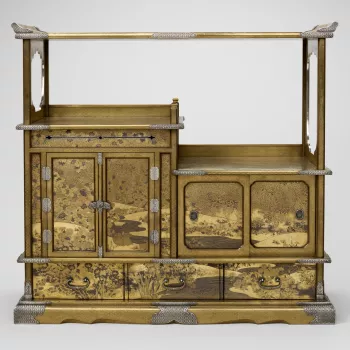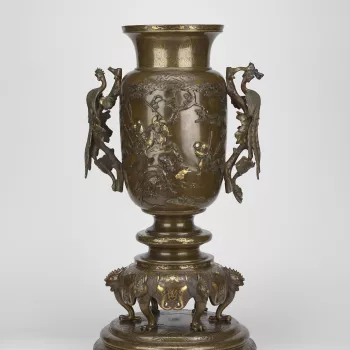
Travel
Japan’s seclusion came to an end in the 1850s, and the country returned to direct imperial rule in 1868. The new Emperor Meiji (1852–1912) encouraged rapid modernisation along western lines.
Members of the British and Japanese royal and imperial families soon made their first diplomatic visits. Among them was Queen Victoria’s son, Prince Alfred – the first foreign royal visitor to Japan. Imperial gifts of the highest quality – such as swords, textiles and screen paintings – entered the Royal Collection for the first time.
As artists began to travel between the two nations, Japanese craftspeople displayed metalwork and enamel at international exhibitions with considerable success. Works by them and by Imperial Household Artists were choice gifts for British jubilees and coronations.












